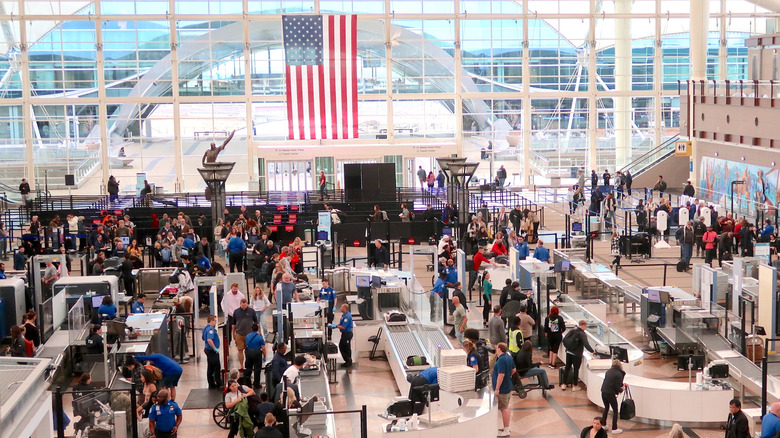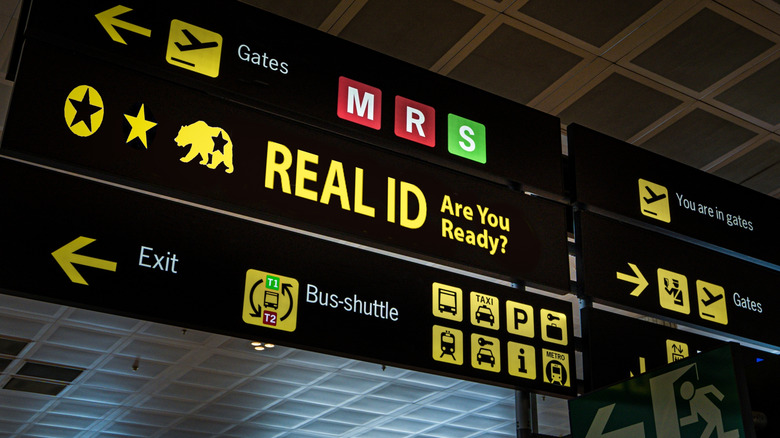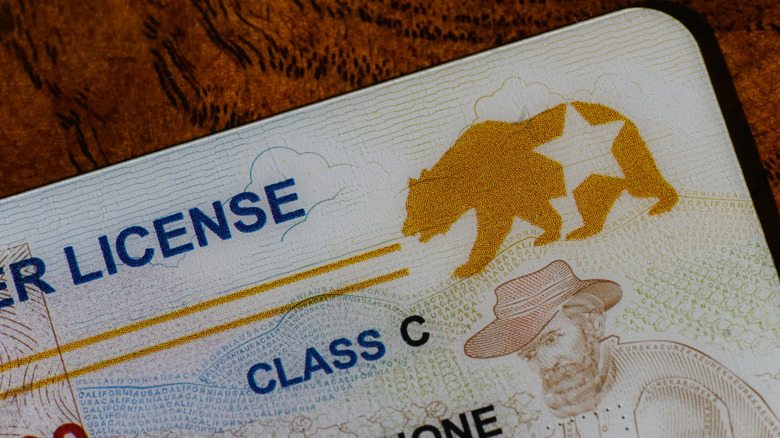The Real ID Deadline Is Coming And TSA's New Rules Are Non-Negotiable
If you're a frequent traveler in the United States, you've probably been hearing about the deadline to obtain a Real ID-compliant form of identification for quite some time now. Well, TSA just announced the latest deadline — and it seems as though this one won't be budging. The Real ID Act was first passed by Congress in 2005 in response to the tragic events that occurred on September 11, 2001. The 9/11 Commission Report suggested that "standards for the issuance of sources of identification, such as driver's licenses" be handled at the federal level, and the Real ID concept was born. The 9/11 Commission felt that it was too easy for people to obtain a driver's license in the United States and that it could be a threat to national security.
It's taken nearly 20 years to roll out the Real ID program, and the deadline has changed several times. This time, it's for real. After May 7, 2025, if you show up to the airport without a Real ID-compliant form of identification — or one of the approved alternatives — you won't be permitted to travel domestically. TSA will not offer alternative verification methods or accept paper IDs if you accidentally forget your accepted form of ID at home.
The ever-changing deadline and controversies of Real ID
Initially, the Real ID enforcement deadline was set for 2008, but multiple states opposed the requirements for various reasons. The Real ID Act has been controversial. Some argue that it stems from racist origins. "The Real ID Act is but one of various recent legislative and law enforcement efforts to control and surveil the mobility of undocumented people and to expand federal immigration enforcement into state and local agencies and interactions ... It is important to revisit Black studies scholarship, which shows that the history of identification documents and their corresponding registries in the U.S. have their origins in the control and surveillance of Black mobility, rooted firmly in the violence of slavery and its afterlives," wrote Bea Abbott in an article published by the African American Intellectual History Society.
Others say that the new regulations violate citizens' privacy. While the overall aim is to improve security, Real IDs are transforming state driver's licenses into federal ID cards, as regular state ID cards will no longer be accepted for federal purposes like boarding planes or visiting federal buildings. "If fully implemented, the law would facilitate the tracking of data on individuals and bring government into the very center of every citizen's life," the ACLU website states.
Some states have delayed rolling out the program due to the high cost, despite tens of millions of dollars in grant money being allocated to the initiative. In 2020, all 50 states finally began issuing Real ID-compliant licenses. Still, the deadline continued to be pushed back until now.
Ensuring you are Real ID compliant
In order to obtain a Real ID-compliant license that you will need to fly, you'll go through your local state agency. The same place where you usually go to renew your driver's license should work just fine. You should check your state's website ahead of time to see exactly what you will need to apply, but the Department of Homeland Security website states that "you must provide documentation showing: 1) Full Legal Name; 2) Date of Birth; 3) Social Security Number; 4) Two Proofs of Address of Principal Residence; and 5) Lawful Status." Some states may require additional information and paperwork.
You'll need your Real ID in order to access certain federal buildings, enter nuclear power plants, and board commercial aircraft. This applies to all 50 states, Washington D.C., and the five United States territories. To check if your current ID is Real ID compliant, look for a star symbol or a symbol with a star inside of it in the upper right-hand corner.
If you don't have a Real ID by May 7, 2025, there are a few acceptable alternatives you can use instead. Some states offer an enhanced driver's license or identification card (EDL/EID) that will also work. These states include Michigan, Minnesota, New York, Vermont, and Washington. You can also use a valid United States passport, a passport card, a DHS Trusted Traveler Card, or a United States Military ID.


